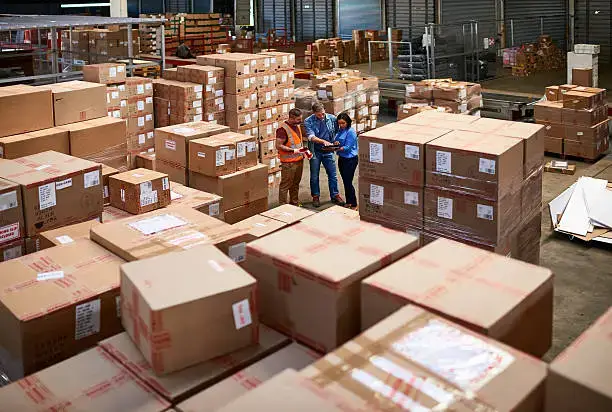
Like the rest of the world, the right distribution channel in Africa can make or break your supply chain. However, navigating the complexity of distribution channels on the continent can be quite daunting, and there are a number of reasons why. In this article, I will show you how to choose the right distribution channel for your supply channel.
Distribution channels in Africa are as complex as the opportunities in the continent are vast. The trick is to focus on the opportunities.
Introduction
With the advancement of technology and business opportunities, distribution channel options have also expanded. Where businesses could not deal directly with customers, now they can, and some businesses can also operate the hybrid model. While a good thing, these options can make it challenging to identify the primary distribution model for our supply chain.
This is especially true in Africa, where the market is vast, diverse, and filled with so much opportunity. In this article, we will explore the different distribution channels on the continent, how to choose the right one for your supply chain and why it matters.
What is a distribution channel?
Simply put, a distribution channel is a path or journey a good or service takes from your supply chain to the end-user or consumer. The network of stakeholders, including individuals and organizations, is responsible for getting your supply chain’s product to the intended user.
A typical distribution channel in Africa is subject to the same factors or elements that affect other distribution models in the rest of the world. The only difference is the type of consumer or end-user and how they interact with the distribution process.
Types of Distribution Channels in Africa
There are generally three approaches to setting up a distribution channel in Africa. They are:
- Direct distribution channels
- Indirect distribution channels
- Hybrid distribution channels (A mix of both)
The ideal distribution channel for your supply chain or business will depend on the strengths and weaknesses of your business and how involved you want to be in selling your product.
Direct DC
This distribution channel is the sale of products directly from the manufacturer or producer to the end user without the need for intermediaries. There are various benefits for you in using this channel, including:
a. complete control over the consumer experience, from production to sales.
b. Direct communication with consumers and relationship building.
b. Greater pricing and profit margin control.
d. The opportunity to obtain direct feedback and ideas from customers.
However, this distribution channel favours small and medium businesses, such as companies with their own retail storefronts, online direct-to-consumer platforms, and door-to-door sales operations.
Indirect DC
Indirect distribution relies on third-party middlemen or businesses to deliver items from manufacturers to consumers. A network of wholesalers, distributors, retailers, and other intermediaries is involved. The following are the primary advantages of indirect distribution:
a. Broad market reach through established distribution networks.
b. access to intermediaries’ specific knowledge and expertise.
c. Manufacturers’ operational and logistical obligations are reduced.
d. Capitalizing on intermediaries’ existing customer base and reputation.
Wholesalers providing products to retailers, distributors supplying products to various sales outlets, and agents/brokers arranging sales between manufacturers and retailers are all examples of indirect distribution channels.
Hybrid DC
The hybrid distribution channel incorporates elements from both the direct and indirect distribution methods. Manufacturers use a combination of direct and indirect channels to target numerous customer categories or geographical areas in this technique. The following benefits are made possible by hybrid distribution:
a. Adaptability to changing market conditions and customer demands.
b. Making use of the advantages of both direct and indirect routes.
c.. Improving market coverage by focusing on certain customer categories.
d. Risks associated with relying entirely on one distribution model are mitigated.
Manufacturers operating their own retail locations but simultaneously utilizing wholesalers or distributors for larger market reach are examples of hybrid distribution strategies, as are manufacturers working with online marketplaces alongside their direct-to-consumer sales channels.
Factors to Contemplate When Choosing a Distribution Channel in Africa
When choosing or optimizing a distribution channel for the African market, there are several factors that businesses need to consider. These include:
# Target Audience
The target audience for the good or service you are selling is one of the most crucial aspects to consider. For certain demographics, different distribution routes will be more effective. For example, E-commerce platforms and social media may be more effective if your target demographic is younger and more tech-savvy. On the other hand, brick-and-mortar businesses may be a better alternative if your target audience is older and less digitally educated.
#Nature of Product
The nature of your product matters greatly when choosing the right distribution channel for your supply chain. For instance, in the fast food industry, the meals and ingredients do not have the luxury of time, effectively forcing these fast foods to favour direct distribution channels. With the rise in e-commerce and food delivery platforms, now partner with these companies to get meals to their customers where they are.
# Cost
The cost of each distribution channel is also an essential consideration. Because of the requirement for physical storefronts and staff, brick-and-mortar stores may be more expensive. Although e-commerce platforms are less expensive, there are still costs connected with shipping, payment processing, and marketing. Social media might seem like a low-cost choice, but your business must be willing to commit time and resources to establish a successful online presence.
# Logistics
Logistics and transportation are essential when selecting a distribution channel in Africa. Poor infrastructure and transportation networks can make getting products to customers quickly and affordably difficult. Whether it uses brick-and-mortar stores, e-commerce platforms, or social media, your business must have efficient logistical systems in place.
Key Challenges to Choosing The Right Distribution Channel in Africa
While Africa has several economic prospects, there are several hurdles you will have to overcome to rip the benefits. The major distribution challenges in Africa are:
# Poor Infrastructure
As previously said, poor infrastructure and transportation networks can make it difficult to deliver items to clients in a timely and cost-effective manner. This is especially true in rural areas, where roads are often unpaved, and energy is scarce.
# Political Uncertainty
Political unrest and war can also cause difficulties for African enterprises. These variables can cause supply chains and logistical networks to be disrupted, making it difficult to get products to customers.
# Limited Access to Finance
Access to money is a significant barrier for many African businesses, particularly SMEs. Businesses may struggle to invest in the infrastructure and logistical systems required to grow their distribution channels if they do not have access to cash.
# Security
The product’s security in the distribution channel is paramount, but unfortunately, there is little control over that in Africa, which also costs the supply chain. Your business must identify the right stakeholders and model to guarantee the product’s safety.
Choosing the Right Distribution Channel for Your Business
You must first understand your target demographic and the African market’s particular difficulties and potential to choose the best distribution channel for your business. Next, you may assess the many distribution channels available and select the one that best meets your company’s demands and budget.
It’s also vital to remember that distribution channels aren’t a one-size-fits-all answer. Depending on your good or service, you may need to employ a variety of channels to reach your target audience efficiently.
Evaluating and Measuring Distribution Channel Performance
Once you’ve decided on a distribution channel for your supply chain, regularly reviewing and measuring its success is critical. This entails monitoring data such as sales, customer satisfaction, and delivery times while making necessary adjustments.
It’s also critical to monitor changes in the African market and alter your distribution strategy accordingly. This could include looking into new distribution channels or expanding existing ones to reach new clients.
FAQS on Navigating Distribution Channels in Africa
Q1: Can I utilize numerous distribution channels at the same time?
Yes, depending on the product, target market, and business objectives, organizations frequently use various distribution channels at the same time. This approach, known as a multi-channel strategy, enables businesses to access a larger client base while also maximizing market coverage.
Q2: In Africa, how can I ensure successful distribution channel management?
Establishing strong relationships with channel partners, ensuring clear communication and collaboration, providing adequate training and support, monitoring performance and market dynamics, and adapting strategies based on feedback and market insights are all required for effective distribution channel management in Africa.
Q3: Are there specific distribution challenges in Africa?
Yes, Africa faces unique distribution issues, such as large geographical areas, insufficient transportation infrastructure, shifting market dynamics, and various customer preferences. These obstacles, however, can be solved by implementing novel distribution tactics customized to the local circumstances.
Conclusion
Choosing the correct distribution channel in Africa is crucial for businesses trying to maximize their potential on the continent. You may design a strong and successful distribution model that will help you succeed by recognizing the particular problems and opportunities of the African market and assessing the various distribution methods accessible.
If you want to expand your business in Africa, do your homework and select the distribution channels that will best meet your goals and budget. With the appropriate strategy, you can realize your company’s full potential and succeed in this exciting and developing sector.

Obinabo Tochukwu Tabansi is a supply chain digital writer (Content writer & Ghostwriter) helping professionals and business owners across Africa learn from real-world supply chain wins and setbacks and apply proven strategies to their own operations. He also crafts social content for logistics and supply chain companies, turning their solutions and insights into engaging posts that drive visibility and trust.








Wow, incredible weblog layout! How lengthy have you been running a blog for?
you made running a blog glance easy. The whole
glance of your site is excellent, let alone the content! You
can see similar: ecommerce
and here sklep internetowy